Feathered Friend Friday
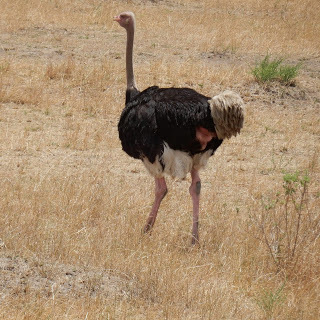 Whenever you travel with someone, you always find out something new about them. When I was in Kenya last October with my friend Denise, I learned that she fancies herself as a birder – trying to seek out and identify as many birds as she can when she travels some place. Which of course meant that I would succumb to this whim while on safari with her.
Whenever you travel with someone, you always find out something new about them. When I was in Kenya last October with my friend Denise, I learned that she fancies herself as a birder – trying to seek out and identify as many birds as she can when she travels some place. Which of course meant that I would succumb to this whim while on safari with her.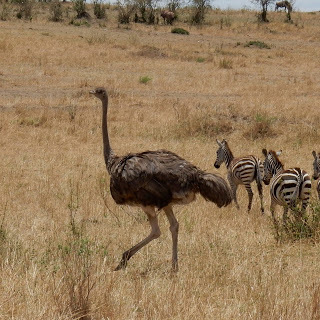
The easiest bird to identify would have to be the ostrich. Obviously he is the largest bird, but also the most well-known. Perhaps less well-known is that, just as with many other species of birds, the colors of the male stand out more than those of the female. Even though he is black, he is still more noticeable than the female.
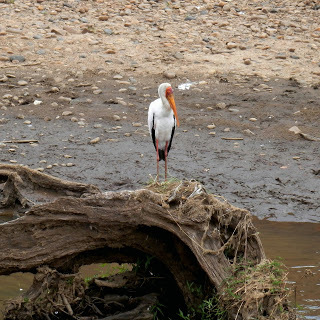 Next well-known is probably the stork. Not that this is the picture of the stork we usually have, thinking instead of the Vlasic pickle stork, or the bird who delivers babies. Or maybe he does.
Next well-known is probably the stork. Not that this is the picture of the stork we usually have, thinking instead of the Vlasic pickle stork, or the bird who delivers babies. Or maybe he does. 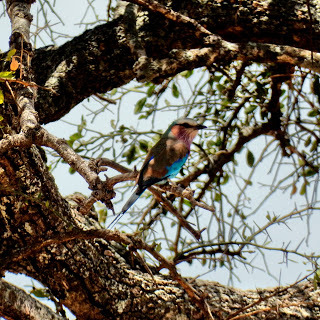 The rest of the birds I took pictures of were of species I was clueless about. Until I did a Google search of “birds of Kenya”. This beauty was the first to come up. He is the lilac-breasted roller. The reason he pops up first in my search is because he is the national bird of Kenya. Who knew?
The rest of the birds I took pictures of were of species I was clueless about. Until I did a Google search of “birds of Kenya”. This beauty was the first to come up. He is the lilac-breasted roller. The reason he pops up first in my search is because he is the national bird of Kenya. Who knew?The lilac-breasted roller is found over a large range and has a stable population, thus he is easy to spot. And obviously easy to identify. His picture on the internet looks exactly like this one.
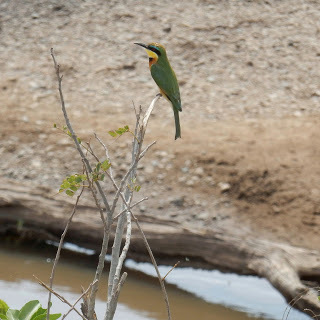 This little guy is the green bee-eater bird. They eat bees, apparently, and unlike the ostrich or many other species, the female is just as pretty as the male.
This little guy is the green bee-eater bird. They eat bees, apparently, and unlike the ostrich or many other species, the female is just as pretty as the male.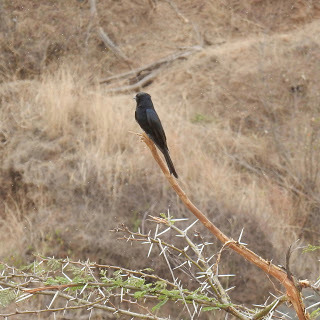
On the other end of the colorful scale is the fork-tailed drongo. He’s still pretty, though, don’t you think? Kind of like how every woman needs a plain black dress. Always elegant.
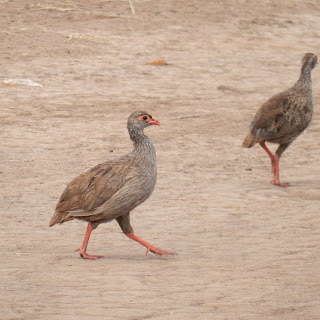 Without even looking up this bird, I would call it a partridge. I thought it might be a stone partridge, but his feathers aren’t quite right or the way he holds his tail. Further research, and I think he might instead be the red-necked spur-fowl. See that small spot of red under his chin? But what do I know?
Without even looking up this bird, I would call it a partridge. I thought it might be a stone partridge, but his feathers aren’t quite right or the way he holds his tail. Further research, and I think he might instead be the red-necked spur-fowl. See that small spot of red under his chin? But what do I know?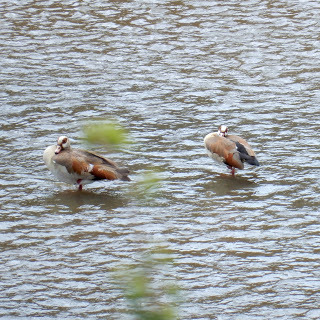 And last but not least, another guess. I think this is a pair of Egyptian geese. Though Egyptian geese originated in Egypt (hence the name), they are found throughout all of Kenya except for the far north and west. I can’t say for certain that this is what these guys, but they do look like it.
And last but not least, another guess. I think this is a pair of Egyptian geese. Though Egyptian geese originated in Egypt (hence the name), they are found throughout all of Kenya except for the far north and west. I can’t say for certain that this is what these guys, but they do look like it.I’d love to hear your thoughts. Especially Denise’s.
Published on January 22, 2016 08:27
No comments have been added yet.



